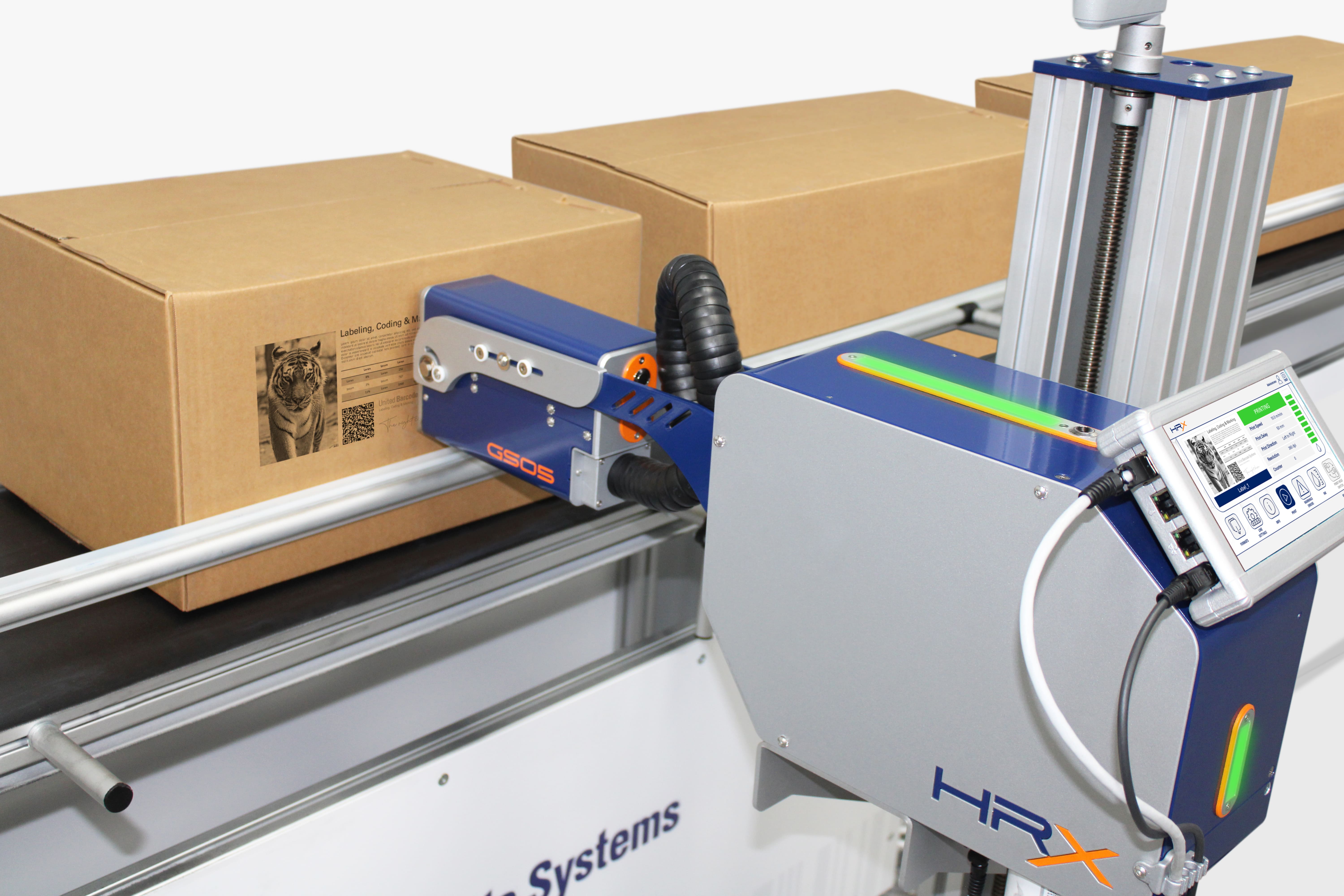Coding and marking are critical elements in ensuring traceability, accurate identification and regulatory compliance of products in a variety of industries. From printing barcodes to labeling key information, having an efficient system in place can make all the difference to productivity and supply chain security.
Choosing the best marking technology will depend on a number of factors, such as material type, production speed and regulatory requirements. Here, from United Barcode Systems manufacturers of labeling, coding and marking equipment with more than 30 years of experience in the industry, we talk about the importance of these systems and the most commonly used technologies today.
Benefits of an efficient coding system
An optimized marking and coding system brings multiple benefits to companies, from improved traceability to optimized production processes. The ability to print clear and durable information enables better inventory control, reduces errors in the supply chain and ensures that each product is correctly identified at any point in logistics.
In turn, the use of advanced coding technologies helps minimize waste and printing errors, which translates into greater operational efficiency and reduced environmental impact. Systems such as high-resolution inkjet printing allow barcodes, batches and expiration dates to be printed with total accuracy, ensuring that the information complies with the required standards.
Sectors requiring advanced marking solutions
The need for reliable coding systems is crucial in multiple industrial sectors. In the food and beverage industry, for example, it is essential to have clear and durable marking on containers and secondary packaging, ensuring compliance with health and traceability regulations.
In sectors such as pharmaceuticals and cosmetics, coding is even stricter, as products must be properly identified with production dates, batch numbers and traceability codes to prevent counterfeiting and ensure consumer safety. Similarly, the logistics and manufacturing industry relies on these systems to facilitate the distribution of goods and improve efficiency in automated warehouses.
Most commonly used marking and coding technologies
Inkjet marking
Inkjet technology is one of the most widely used in the industry due to its versatility, speed and efficiency, allowing the printing of codes, texts and images with great precision. This system offers the advantage of direct printing, without contact with the surface, which reduces equipment wear and avoids damage to the packaging. Its ability to adapt to porous and non-porous surfaces, guarantees a high level of legibility on different types of secondary packaging such as boxes, trays and sacks, ensuring that the printed information remains clear and visible throughout the logistics chain.
Laser Marking
Laser Marking has become a popular choice for product identification, especially in industries such as electronics and automotive. It uses a high-intensity beam of light to etch directly onto the surface of the material, ensuring permanent, wear-resistant coding. However, this system has certain limitations, such as its lack of flexibility If the company decides to change the packaging material or modify the coding content, in some cases it may require adjustments to the lens or, in the worst case, the purchase of new equipment, which implies a high investment cost and less adaptability to changes in production.
Thermal transfer
Thermal transfer is a coding technology widely used in industries that require durable, high-quality printing on labels and flexible packaging. It works by using an ink ribbon that transfers the content to the surface by heat, allowing text, barcodes and graphics to be printed with excellent resolution. Although this method offers high print quality, its dependence on consumables can increase operating costs in the long term. In addition, its application is more limited to flexible materials, which restricts its use on certain types of packaging.
Industrial labeling
Industrial labeling is an effective solution for product and packaging identification, especially when printing and applying labels with real-time variable information is required. Systems such as the UBS Print & Apply APL Series enable the automatic printing of labels with barcodes, logistical information and other relevant data, ensuring accurate and GS1-compliant labeling.
APLINK Series: The ultimate solution for industrial labeling
Advantages of the APLINK Series
One of the key aspects of the APLINK Seriesis its ability to print with minimum consumption, optimizing ink management and reducing the operating costs of the printing process. In addition, their high-resolution technology enables barcodes, text and images to be generated with exceptional definition, ensuring legibility even under demanding storage and transport conditions.
The flexibility of this equipment allows it to be integrated into any production environment, facilitating connectivity with other automation systems. Thanks to this versatility, the APLINK Series can print on secondary packaging such as boxes, sacks and trays, ensuring that codes are 100% readable and compatible with GS1 standards (GTIN13, GTIN14, GS1-128, GS1 Datamatrix, among others).
Versatility and accuracy in different industries
APLINK Series printers are designed to adapt to multiple industries, from food and pharmaceutical to logistics and manufacturing. Their ability to print on porous and non-porous surfaces makes them the best choice for companies that require reliable coding on different types of packaging.
At the same time, our equipment is ready to operate on high-speed production lines, delivering consistent results without generating downtime. This enables companies to maximize their operational efficiency and ensure accurate traceability of their products throughout the supply chain.
APLINK HRX: Innovation and Efficiency in Industrial Coding
Going into more detail, APLINK HRX is the most advanced high-resolution inkjet printer from UBS, designed to offer exceptional performance in industrial environments. Thanks to its multi-channel vertical resolution management system and its ability to achieve up to 1440 dpi in horizontal resolution, this direct printing equipment guarantees the highest quality marking and contrast on any type of surface.
One of its main advantages is the integrated HR Link communication, which allows full control over any printer parameter from the user interface. In addition, its advanced connectivity facilitates integration with peripherals such as encoders, beacons or UVLED curing lamps, offering a fully adaptable solution to the requirements of each production line.
Bottle auto-detection is another key feature of the APLINK HRX, as it automatically identifies the type of ink inserted, eliminating errors and ensuring optimum print quality at all times. This minimizes input waste and improves the efficiency of the coding process.
Finally, its ability to operate at speeds of up to 250 m/min and generate messages up to 8 meters in length makes this equipment an ideal solution for companies that require high-volume marking without interruptions in production.

APLINK HRX GS05 equipment
Find the best solution for your marking system, we will give you personalized advice.
Choosing the right coding system can make the difference in efficiency, quality and traceability of products. At United Barcode Systems, we have a wide range of solutions designed to suit different industries and production needs, ensuring accurate and durable printing.
If you are looking for a reliable, high-performance solution, our team of experts is ready to advise you and help you find the ideal equipment for your production line. Contact us and find out how we can help you optimize your industrial coding and marking system.

